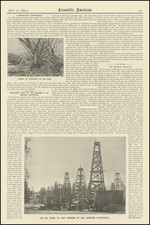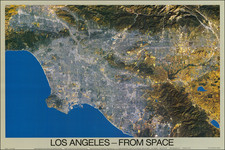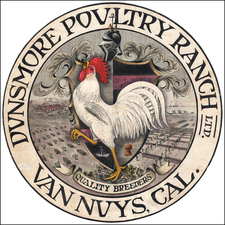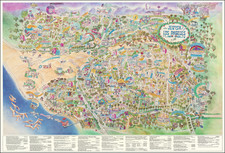Selling Real Estate Los Angeles in the 1920s
Large advertising broadside, promoting buildings for sale in Los Angeles.
The buildings shown are:
- Four Blocks from Westlake Park
- Torrance (Murray Hotel, designed by Irving Gill)
- West Adams & Grand
- near West Adams & Figueroa
- a few blocks west of Broadway
- near 7th and Figueroa
- between the Rosslyn Hotel and Southern Pacific Depot
- Westlake Avenue, just off Pico
- Between Pico and Washington Street.
The 1920s marked a transformative era for Los Angeles, with its commercial real estate sector experiencing robust growth. Propelled by Hollywood's ascent as the global entertainment hub and significant oil discoveries, the city drew a diverse population, creating a surge in demand for commercial spaces. Iconic establishments like the Egyptian Theatre and the Biltmore Hotel emerged, symbolizing the decade's affluence.
Transportation advancements further boosted this growth. The expansion of the Pacific Electric Railway made far-flung areas accessible, opening them up for commercial exploitation. Additionally, the growing automobile culture led to the establishment of auto-related businesses.
Torrance and Irving Gill
The Torrance commercial building (No. 2) is notable as a little-known design by the important Southern California architect Irving Gill. According to Thomas S. Hines, Gill was invited by the Olmsted brothers to design the model industrial city south of L.A., which was named for its founder, Jared Sidney Torrance. A vice president of the Union Oil Company who was also on over 140 corporate boards in banking and land development, Torrance envisioned a new industrial town on a tract of over 3000 acres of what had been part of the old Rancho Dominguez. The idea, partly motivated by tense labor-management unrest following the bombing of the Los Angeles Times building, was "a capitalist's concept of a worker's paradise - in which living conditions would be so wonderful that labor unrest would vanish" (Hines). Gill created several radically modern buildings in Torrance in 1913-14, including a Pacific Electric Station, an elementary school, the Bank of Torrance, and twin hotel buildings, the El Roi Tan and the Murray. The latter are described by Hines as being in Gill's mature, handsomely simple, style. The Murray Hotel building, which is no longer standing, has a modern look incorporating clerestory windows on the first floor, and certainly stands out when juxtaposed with the other stodgy, albeit solid-looking buildings illustrated herein.









![[Los Angeles, Santa Barbara & Central Coast ] Amer. Sep. No. 52 Partie De La Nouvle. Californie](https://storage.googleapis.com/raremaps/img/small/93539.jpg)




![Tract of Land in Los Angeles City California containing 10 acres owned by the Rom[an] Catholic Church](https://storage.googleapis.com/raremaps/img/small/71702.jpg)